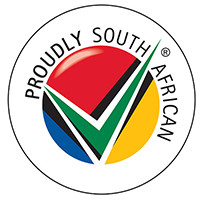The government, through the Department of Economic Development, has put preferential procurement regulations into place and identified products such as clothing, textiles and footwear among other items to be sourced locally. Photo: Reuters
Cape Town - President Cyril Ramaphosa's call to the nation to buy local to stimulate the manufacturing sector might not be so easy considering all the factors that impede the urge to buy locally produced goods.
Ramaphosa made the call in his State of Nation address, saying: "We will stimulate local demand and grow South African manufacturing by making sure the 'Buy Local' campaign is everywhere and ever-present. We call on all South Africans to deliberately and consistently buy locally-made goods."
He announced that within the next year the government would continue to seek agreements with retailers to stock more South African goods on their shelves and actively promote products made by South Africans.
Wesgro head of research Cornelis van der Waal welcomed the call but said that it was not so easy.
"Consumers make decisions based on price and quality. Many South African products are high quality but it is often difficult for local manufacturers to compete on price because of the higher cost of doing business in South Africa, including production input costs," he said.
"The cost of production is high in South Africa, technology use is low (making costs higher), we are far from traditional markets (adding transport costs) and we have over-relied on raw mineral exports rather than investing in skills development for value adding industries.
"There are many more factors, including exchange fluctuations. Having said that, we do compete in many sectors such as wine, citrus, apples and other agri-related products," Van der Waal added.
Proudly South African, the brainchild behind encouraging the president to support local designers, sent a letter to him a week before his address requesting he don a hand-made suit. But they still had a mixed reaction.
Deryn Graham, spokesperson for Proudly SA, said: "It's just ignorance; even the president was unsure where he could go to buy a local suit.
"That's why part of our drive is to encourage consumers to look for the Proudly SA logo or a Made in SA label.
"Also, there is a (misguided) perception that local is more expensive. It might be more expensive than cheap Chinese imports, but we have products and services at all price points so people must compare apples with apples," added Graham.
Ramaphosa wore a suit made by the House of Monatic in Salt River.
South Africa is fighting to revive its frayed clothing industry, once a crucial provider of jobs, as a flood of cheap imports forces factories to lay off workers. The arrival of giant international 'fast-fashion' brands such as H&M and Zara have added to the woes.
Jake Morris, chief facilitator of the Cape Clothing and Textile Cluster, said there were a wide range of challenges facing the clothing industry.
And they were not necessarily wages "because ours are competitive compared to many other countries with successful clothing industries".
"The main challenges are inflexible working hours, a shortage of management skills, not enough strategic supply chain partnerships, limited local raw materials and weak customs enforcement," he said.


